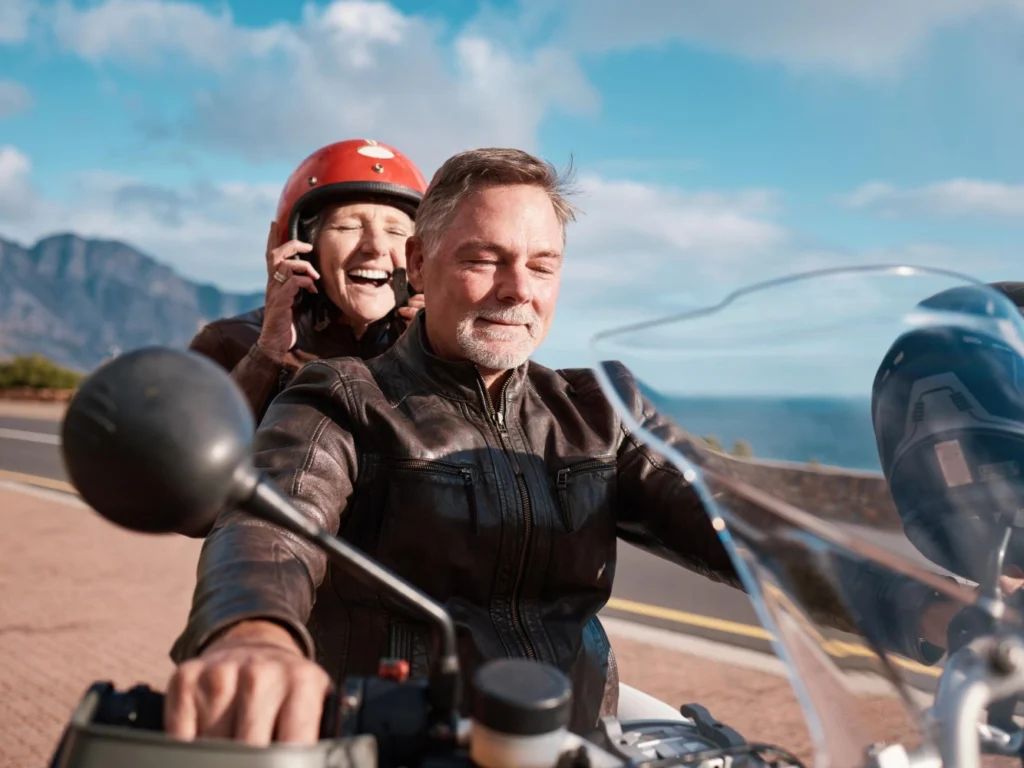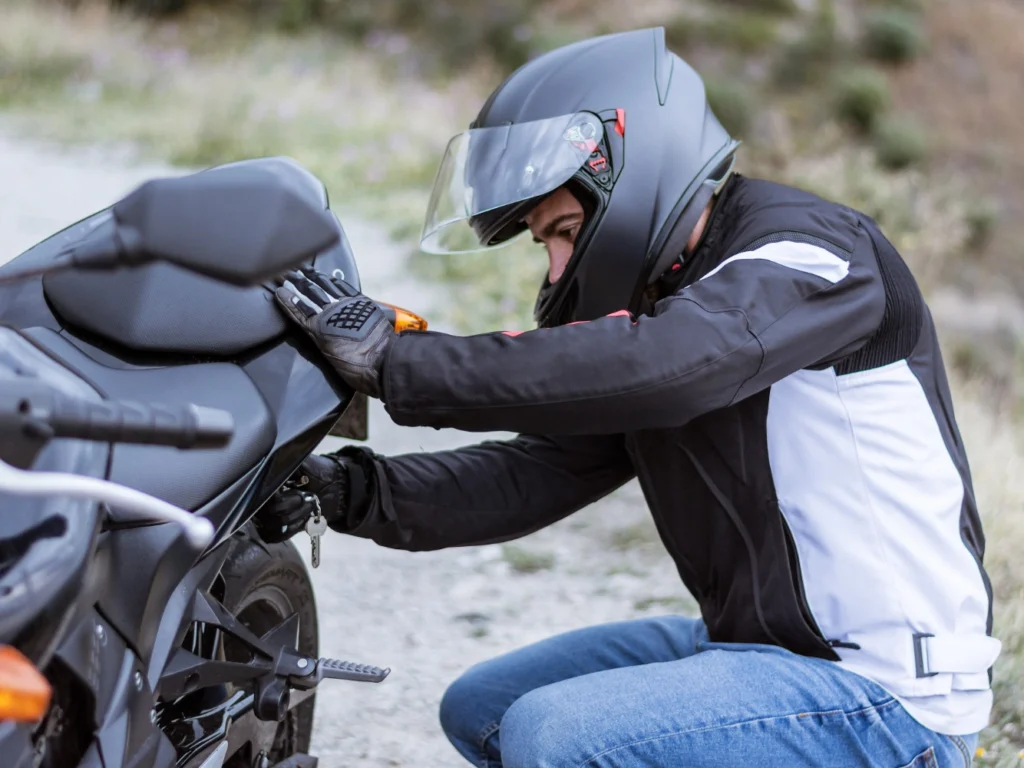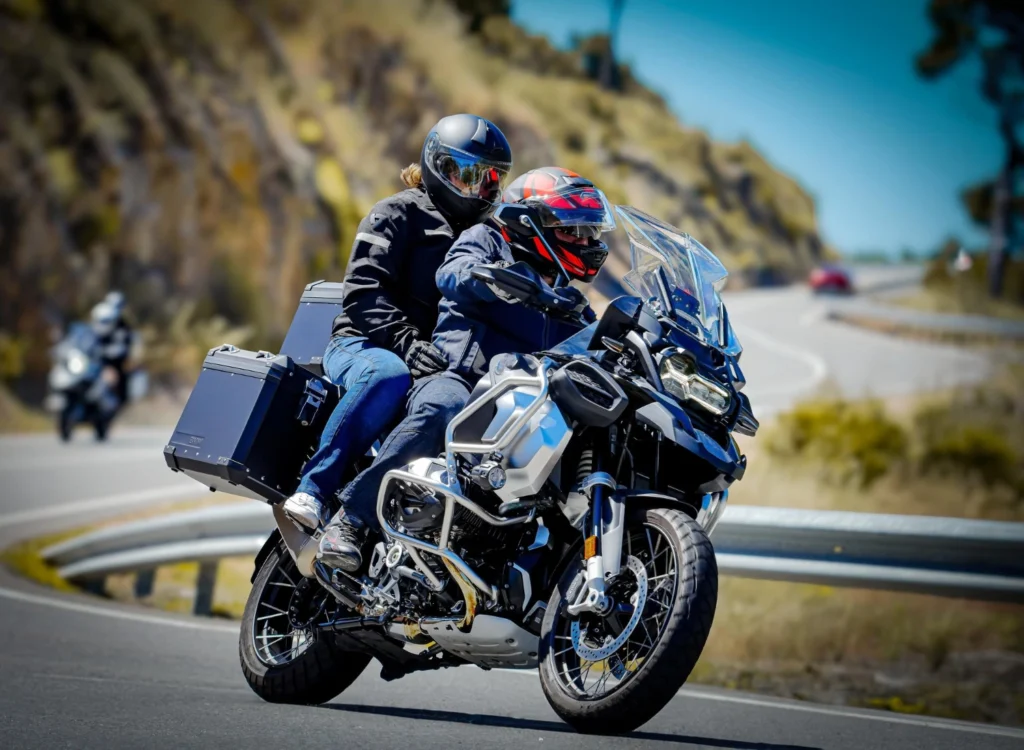Riding a motorcycle through Italy’s beautiful landscapes is even more fun when you have a friend or partner along for the ride. From Milan’s historic plazas to the lake shores of Trentino and Garda, Italy offers an unforgettable backdrop for two-up motorcycle touring. At Italy Moto Tours, we encourage riders to bring a passenger on any of our guided tours. Every tour allows a rider and passenger, and we even offer special “Passenger Tours” where one of our professional guides drives your bike so you can simply sit back and enjoy the scenery. This way, everyone can experience Italy’s beauty safely and comfortably. We provide high-quality touring motorcycles with ample room for two riders: our premium models (like BMW or Ducati tourers) feature wide, cushioned seats and even options for backrests, making two-up riding comfortable. All our bikes come with sturdy panniers and a top case, so you can pack luggage and gear for two. In fact, our Dolomites tour pricing even includes a “Couples” rate, covering one rider plus one passenger – making it easy for partners to join the adventure. As we guide you through Italy’s winding roads, each group has an English-speaking guide (one per six participants) and a support van for extra help, so you can focus on the ride and relax knowing we’ve got the logistics covered.

Preparing Your Bike and Yourself
Before you hit the road, make sure both your motorcycle and you (and your passenger) are ready for two-up touring. Not every bike is automatically set up for two-up rides. Touring motorcycles are ideal: they often have larger, comfortable passenger seats with footboards and backrests. Sports bikes or small cruisers with minimal passenger accommodations can make long rides uncomfortable. If you’re using one of our bikes, know that many modern touring bikes allow suspension adjustments for extra weight. Adjust the suspension to compensate for a second rider and any extra luggage; this will keep the ride smooth for everyone. Check that the passenger foot pegs are down and secure. Consider adding a backrest or top case (some bikes support this) so your passenger can brace or lean slightly during acceleration and stops.
- Gear Up Completely – Both rider and passenger must wear full protective gear (helmet, jacket, gloves, sturdy pants, and boots). In Italy (and by best practice everywhere), All The Gear, All The Time (ATGATT) is a must. Wearing proper gear is just as important for the pillion (rear rider) as the driver. We insist on helmets that meet safety standards, plus gloves, jackets with armor, and other protection for both riders.
- Pack Smart – Use the bike’s luggage boxes (panniers/top box) for gear. Our tour bikes are low-mileage and equipped with three luggage compartments – two side panniers and a top case – so you won’t have to juggle bulky backpacks. Pack any items you need easy access to (water, camera, maps) in a handlebar bag or top case.
Because extra weight changes the bike’s behavior, double-check your motorcycle before leaving. You might even do a short practice ride around the parking area with both rider and passenger on board. This lets you feel the difference – braking distances, steering, and balance all change with two people aboard. At Italy Moto Tours we recommend that pairs practice mounting and dismounting safely, too. Always plan a smooth routine: for example, have the passenger swing onto the rear seat first (holding the bike steady), and only move once the rider is ready. Avoid climbing on with the bike fully balanced unless someone is there to steady it – otherwise it could tip. Talk through the process with your passenger before you start each day, so there are no surprises.

Communication and Planning
Clear communication is key when riding two-up. Before you even start the bike, agree on how you will signal and talk on the road. Four eyes are better than two – your passenger can help spot obstacles and traffic. We recommend using a helmet intercom system if possible, so you can chat in real-time even at speed. If you don’t have intercoms, establish simple shoulder-tap signals: for example, a tap on the right shoulder means an upcoming right turn, tap left shoulder for left, etc. Make sure your passenger knows basic hand signals and that you’ll remain alert to any taps or voice cues. Effective communication makes the ride not only more fun, but “it also makes it much safer for you both”.
Plan your day’s route and stops with two people’s comfort in mind. Two-up riding can be more tiring, so schedule more frequent rest breaks. Stretch legs and arms, hydrate, and switch passengers (if you have two bikes and partners ride with others) so everyone stays fresh. Italy Moto Tours guides always plan scenic routes with built-in breaks at safe pull-offs, rest areas or charming villages. For example, on our Dolomites tour riders enjoy lunch in mountain refuges and afternoon breaks at lakesides. Discuss any special needs before the trip (e.g. your passenger’s comfort, food preferences, any motion sensitivities) so our guide can accommodate. This way, both rider and passenger will enjoy the experience.
Mounting, Seating, and On-Bike Safety
Getting on and off a moving motorcycle requires teamwork. We advise passengers to mount the bike only when it’s firmly on its side stand or very low-speed and the rider is braced. Many riders find it easier if the passenger hops on from the rear seat rather than stepping on one side. Always have the passenger wait for your signal to climb on or off. Once aboard, the passenger should sit squarely in the middle of the rear seat, facing forward, with feet on pegs and (ideally) both hands lightly holding onto the rider’s hips or a grab handle. Keep your passenger from leaning independently – they should match your body lean in turns. A sudden lurch from the passenger can destabilize the bike. We remind both rider and passenger: you’re not driving the motorcycle – the rider has full control. The passenger should “give up the control and trust the rider with your life,” just as our friend Rhonda says in Riders Now. That means being ready for any move, even if you didn’t see it coming.
- Mount and Dismount Carefully – Always stop, stabilize the bike on its stand, and then have the passenger swing up onto the rear seat. Don’t let the passenger climb on while you’re balancing the bike; unexpected weight can tip it. Communicate clearly: “I’m steady” means it’s safe to mount.
- Seating Position – Sit as far back as comfortably possible, keeping the passenger’s knees tucked along the rider’s hips or sides. Have your passenger lean slightly forward when you accelerate, and brace back against acceleration. For braking, they should grip the rider’s waist or a grab bar to avoid sliding forward.
- Stay Smooth – Both rider and passenger should move as one unit. In corners, the rider will lean the bike; the passenger should not lean more than the rider. Keep your weight centered as much as possible. Don’t make sudden movements (shifting weight, looking back, thrashing arms) while the bike is in motion. This helps keep the motorcycle balanced.
Riding Techniques for Two-Up

Carrying a passenger changes the motorcycle’s dynamics. Acceleration is slower, braking distances are longer, and cornering requires different balance. As the rider, adopt a smoother, more deliberate style. Gradual acceleration and gentle throttle control help prevent the rear passenger from being jostled. Downshift earlier before brakes to avoid abrupt deceleration. Each of our guides emphasizes: “This is not the time to show off”. If your passenger is new to two-up, take it easy, especially on twisty roads or first-time experiences. Our routes include fun curves, but with a passenger you should “plan ahead more to minimize the frequency of sudden movements”. Slow down early for turns, and maintain an extra safety margin in case your passenger has to adjust.
If you ride two-up often, you’ll learn to brace and balance together. For example, wrap one arm lightly around the rider’s waist or torso (or use a grab strap if the bike has one) and let the other hand hang loosely or hold the bike’s frame. This gives you stability without fighting the rider’s lean. We recommend both riders wear communication headsets on long tours so the passenger can warn of rough road spots or passing vehicles – again, “four eyes are better than two”. In our experience guiding tours, a relaxed passenger who “participates” in the ride (keeping themselves steady and alert) makes for a safer journey than a passive, sleeping rider. Encourage your passenger to look out ahead and act as a second navigator or photographer. After all, two-up touring is a team effort!
When planning two-up tours in Italy, choose routes suited for two riders. Italy Moto Tours designs itineraries (Tuscany’s rolling hills, the Amalfi Coast’s scenic curves, the Dolomites’ alpine passes, or Sardinia’s varied terrain) with comfortable ride distances and rest stops. Our guides are familiar with roads that are thrilling yet manageable for two-up riding. For example, on a sharp alpine pass we might slow the group, ensuring no one feels rushed or unstable. We also remind riders that Italian law requires both of you to wear helmets – not just for safety but compliance – and that drivers must hold a valid motorcycle license. We book quality 3- and 4-star hotels with rooms for couples or doubles (so rider and passenger share a room), and the pricing reflects that: note on our Dolomites tour itinerary that there’s a special rate listed for “Couples (rider and passenger)”.
Gear Reminders and Final Tips
- ATGATT for Everyone – Don’t let your pillion slouch on gear. The passenger needs a well-fitted helmet (Japanese or ECE approved), protective jacket, pants, gloves, and boots – all the gear, all the time. Think of the passenger as you would a small child learning to walk: you’d hold their hand. On a bike, you should hold or brace them. If your riding partner refuses proper gear, it’s safer to swap seats or even ride with another bike.
- Stay Hydrated and Energized – Being a passenger can be surprisingly tiring. Encourage your partner to drink water regularly and enjoy Italy’s local refreshments at stops. Good food and rest make the next day’s ride fun for both of you.
- Practice Two-Up Rides Locally – Before going cross-country, do a few weekend practice runs near home. Adjust your bike and style gradually. This builds confidence and communication patterns.
At Italy Moto Tours, our goal is that both the rider and passenger come home raving about the trip. Our track record shows happy couples and friends who have explored Italy together on our bikes. With expert guides and support vehicles, any rider can feel comfortable bringing a passenger. We design every tour – from the Amalfi Coast to Sardinia – to accommodate two riders, ensuring every tandem team enjoys the experience fully. We handle the route planning, bookings, and safety briefings; all you do is enjoy the ride and the amazing Italian culture along the way. Riding two-up can create memories that last a lifetime – sharing scenic sunsets in Tuscany or winding mountain passes under the Alps. Communicate, gear up, and ride smoothly together, and you’ll find touring with a passenger is twice the fun. When you’re ready to add a passenger to your next adventure, Italy Moto Tours is here to make it happen. Our experienced team ensures that two-up riders receive the same premium experience as solo riders – complete with top bikes, friendly guides, and well-planned routes. Contact us today to book a tour for you and your passenger, and discover how two-up touring in Italy with a trusted company can be the ride of a lifetime.




